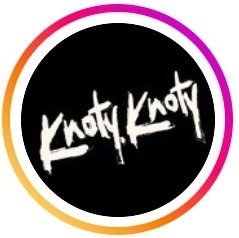Fashion
Are Americans Buying Into a Return to ‘Normcore’ Fashion Items?
Fashionistas from all walks of life, and perhaps even those only marginally interested in the business of fashion, might remember the so-called “normcore” aesthetic trend of a decade ago. Hinging around elevated everyday looks which were equal parts tasteful, versatile, and decidedly unflashy, Forbes recently reported that Americans are once again showing interest in this mode of apparel.
Forbes contributor Zoe Bayliss Wong gestured toward the 140 million references on TikTok as part of the normcore resurgence, while also citing Edited.com data suggesting that the sale of neutral or plain wardrobe staples ticked upward by 13% year-over-year in the first quarter of 2025. Wong also pointed to Uniqlo’s increased traffic and market success as emblematic of a return to a more staid aesthetic in the American retail fashion world, as well as the strong performances by H&M brands ARKET and COS, both known for their timeless and minimalist style offerings.
Fashion Retailers Positioned Around ‘High Quality Essentials’ May Do Well Due to Normcore, and Sustainability Messaging Could Resonate
Wong went on to underscore the fact that fashion retailers who have already cultivated a reputation for high-quality essentials are best-positioned to benefit from this trend-that-isn’t-a-trend, especially given the fact that LVMH-owned brands such as Loewe and Celine have leaned heavily into “casual elegance” thematically as of late.
Sustainability concerns may also be addressed by the return to normcore fashion sensibilities by U.S. consumers, as several key elements line up in this regard. The normcore aesthetic emphasizes versatility, meaning that the same black or gray T-shirt could be worn repeatedly across several entirely different outfits without friends, family members, or members of the general population taking too much notice. Normcore and normcore-adjacent garments are also frequently mainstays of the secondhand clothing or thrift shop circuit, meaning that both retailers and consumers — and the environment — benefit from rising interest in the style.
Wong was careful to point out the potential pitfalls involved with both overstating the impact of the trend as well as the often mercurial tastes of the upcoming Gen Z consumer demographic. While Gen Z is concerned with climate change and sustainability practices, normcore also bucks their established taste preference for customization and uniqueness over more conservative fashion options, according to the columnist.
Normcore Reflects a Broader ‘Cultural Pause,’ and Contemporary Anxieties: How Can Retailers Capitalize on The Trend?
“In a moment when economic uncertainty is rife and the fashion industry is under pressure to decelerate, normcore represents restraint. It encourages thoughtful consumption, values function over flash, and offers brands a rare chance to align with sustainability not through optics — but through action,” Wong wrote of the broader sentiment surrounding the industry, calling the moment a “cultural pause.”
The question, then: How can fashion retailers leverage this apparent feeling among consumers to best effect? Efforts surrounding sustainability or environmentally conscious marketing have drawn mixed responses from business minds, with some suggesting that the up-and-coming consumer is at once interested in inexpensive but environmentally damaging fast or disposable fashion, but also committed to minimalism in their purchasing choices.

